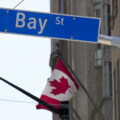The Hub launched with a core mission of getting Canadians thinking about the future. We’ve been stuck in the doldrums, pessimistic and polarized, for too long. To lay out a roadmap for the next 30 years of Canadian life, we asked our contributors to pinpoint the most consequential issue, idea or technology for the country in 2050. This series of essays by leading thinkers will illuminate Canada’s next frontier.
The aging of Canada’s population, a demographic phenomenon that’s well underway, may profoundly affect Canada’s economy including the well-being of our senior population. As such, income support for seniors is an important focus of government policy.
There are two main government-funded income support programs for seniors — Old Age Security (OAS), which is the main program, and the Guaranteed Income Supplement (GIS). The OAS is a monthly payment to Canadians 65 or older, calibrated according to individual income. Individuals earning more than approximately $128,000 (2020) have their entire OAS payment clawed back in taxes. The GIS is a monthly payment to people 65 and older who receive OAS benefits and have incomes below specific thresholds.
According to the 2021 federal budget, Ottawa plans to increase the OAS benefit beginning in 2022, in addition to providing a one-time $500 payment to OAS recipients over age 75.
The number of seniors eligible for these income support programs is expected to grow dramatically as Canada’s population gets older. Specifically, the number of OAS beneficiaries is projected to double between 2019 and 2060, while the number of GIS beneficiaries is expected to increase by 63 percent over that period.
“… the projected growth of spending on income support programs for seniors may crowd out government spending on basic health care and other services critical to seniors.”
This growth reflects a projected doubling in the number of people 65 and over in Canada from 2019 to 2060, with the most substantial share of this projected growth occurring between 2019 and 2035. By 2060, approximately 25 percent of Canada’s projected population will be 65 or older, compared to 17.4 percent in 2019.
If no substantive changes are made to these two programs, Canada’s chief actuary projects that total combined spending on the OAS and GIS programs will increase by 400 percent between 2020 and 2060. Of course, Canada’s Gross Domestic Product (GDP) will also increase over this period. Nevertheless, the ratio of spending on income support-to-GDP will reach 3.12 (expressed as a percentage) in 2035 compared to 2.77 percent in 2020.
As with any government program, the opportunity cost (essentially, the loss of potential gain from other alternatives) of these income support programs for seniors is forgone spending on other public or private goods and services. Within the envelope of government expenditures targeting seniors, forgone expenditures on health-care services are particularly salient given the disproportionate use of medical services by seniors. In this context, current expenditures on income support programs for seniors are about 50 percent larger (in dollar terms) than the sum of federal government transfers to provinces and territories to fund basic health-care insurance programs.
Given the larger amount of federal government expenditures on income support programs for seniors compared to transfers to provinces and territories to help pay for basic health care, simple arithmetic says that any absolute transfer of dollars from income support programs to health care will have a greater percentage impact on health care. Equivalently, any absolute increase in federal government expenditures on income support will have a relatively more substantial negative impact on health-care expenditures.
The main takeaway?
Absent increases in taxes or federal government deficits, which raise additional money for public spending, the projected growth of spending on income support programs for seniors may crowd out government spending on basic health care and other services critical to seniors. Clearly, this and other possible policy challenges associated with Canada’s aging population merit more attention from policymakers than they currently receive.
Recommended for You

‘Another round of trying to pull capital from Canada’: The Roundtable on Trump’s latest tariff salvo

‘We knew something was coming’: Joseph Steinberg on how Trump is ramping up his latest tariff threats against Canada

Rudyard Griffiths and Sean Speer: Canada’s high-stakes standoff with Trump

Canada is losing ground on investment. Here’s where



